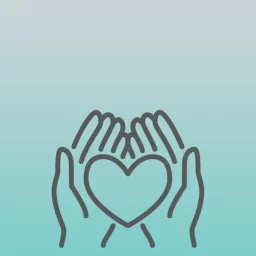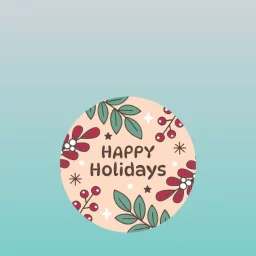Habits: Why We Do What We Do
A new year is here and for many, it is a time to set goals as a new chapter begins. The most common resolutions we make after the holidays usually focus on things like losing weight, better eating habits, more exercise, saving money, getting organized and quitting smoking. But are we able to make the habit stick?
Did you ever stop to think that where we are today is the sum of our habits?
What we repeatedly do and spend time thinking about has ultimately formed the people we are, the things we believe, and the personalities we portray.
Did you also know that approximately 45% of Canadians will make a New Year’s resolution? Thirty percent of people will have given up on their resolution within the first two weeks, and 50% of us will not make it to the 6-week mark.
So how do we make a habit stick and increase the chance of following through on a New Year’s resolution?
The Power of Habit
Charles Duhigg and James Clear are authors who write about the science of productivity and have written wonderful books called the Power of Habit, and Atomic Habits. Their books are fascinating reads that delve into the science of habits and how they can be changed. When it comes to turning a new behaviour into a habit that will stick, it turns out there is a pattern in the foundation of every habit. Our brains run through four steps, in the same order, each time.
This four-step process is an ongoing feedback loop that is running in our subconscious all the time. Our brains are continually scanning the environment, predicting what will happen next, trying out different responses, and learning from the results. This whole loop is completed in a split second, and we replay this loop over and over again every day.
The Four Stages of a Habit
- Cue – A cue triggers your brain to initiate a behaviour. A cue is a signal to the brain that predicts a potential reward. Think of early mankind and the cues in nature that would signal vital rewards like food and water. Times have changed since then, and today we spend most of our time learning cues that predict secondary rewards like money, power, praise, approval, love and personal satisfaction. A cue is the first signal to our brain of a potential reward, and it naturally leads to a craving.
- Cravings – Cravings act as the motivational force behind every habit and they cause us to act. This second step is a necessary catalyst for change to occur and without it, a habit will not form. Science tells us that we don’t crave a habit itself but we crave the change it will deliver. For example, we are not motivated by the act of brushing our teeth, but rather by the feeling of a clean mouth afterwards. Smokers crave the relaxed feeling that comes with smoking. Every craving is linked to a desire for internal change. Cravings differ from person to person and we are not all motivated by the same cues. The sounds and lights of a slot machine that can evoke a wave of desire in a gambler are interpreted as background noise to someone else. It’s the thoughts, feelings, and emotions of the observer that transform a cue into a craving.
- Response – The response is the actual habit we develop and can be a thought or an action. Whether a response occurs or not depends on how motivated we are and how much resistance is associated with the behaviour. A response also depends on one’s ability. If a particular action requires more physical or mental effort than we are willing to expend or if it is beyond our ability, then it won’t happen. For example, if you want to dunk a basketball but can’t jump high enough to reach the hoop, then it won’t happen.
- Reward – The reward is the fourth step of the feedback loop and the ultimate goal with every habit. Rewards serve two purposes. First, they satisfy our craving. For example, getting in shape serves to improve overall health and lose weight, but the immediate reward is to gain status or win approval. Secondly, rewards teach our brain which actions are worth remembering in the future. Our nervous system is continuously monitoring which actions satisfy our cravings and deliver pleasure. Feelings of pleasure and disappointment are results that help our brain distinguish useful actions from useless ones. Rewards close the feedback loop and complete the habit cycle.
So let’s get back to the common New Year problem of failed resolutions. Why don’t we do what we say we are going to do? The answers to those questions can be found somewhere in the four foundational steps of the habit loop. The ultimate secret to creating good habits and breaking bad ones is to understand these steps and adjust them to our unique requirements. Every goal would be doomed to fail if it went against the grain of human nature.
How to Create a Good Habit
Whenever you want to change your behaviour and make a new habit, ask yourself:
- How can I make it obvious?
- How can I make it attractive?
- How can I make it easy?
- How can I make it satisfying?
- How to Break a Bad Habit
To break a bad habit we can inverse the principles of how to create a habit:
- How can I make it invisible?
- How can I make it unattractive?
- How can I make it difficult?
- How can I make it unsatisfying?
All behaviour is driven by the need to solve a problem. It may be we notice something good and we want to obtain it. Sometimes, we are experiencing pain and want to relieve it. As adults, we rarely notice the habits that run our lives. They have become second nature to us and we never stop to think about the fact that we put our shoes on the same foot first each morning, automatically check our phones when we hear a buzzing, or lock the car door as soon as we exit the car. After so much repetition, these habits have become a mental program and we automatically slip into these patterns of action.
The key to losing weight, eating better, getting more exercise, saving more money, getting organized and quitting smoking is to understand how habits work! Habits aren’t destiny, and a New Year is a new adventure waiting to be created. As Duhigg and Clear have shown us, by harnessing the framework behind the science of why we do what do, we can transform our health, work, communities and lives and make good habits the ones that stick.
For more information or to book an appointment with one of our healthcare professionals, visit our clinic websites at Curavita Byward and Curavita Glebe.
Byward Market
Email: info.byward@curavita.com
Glebe
Email: info.glebe@curavita.com
















